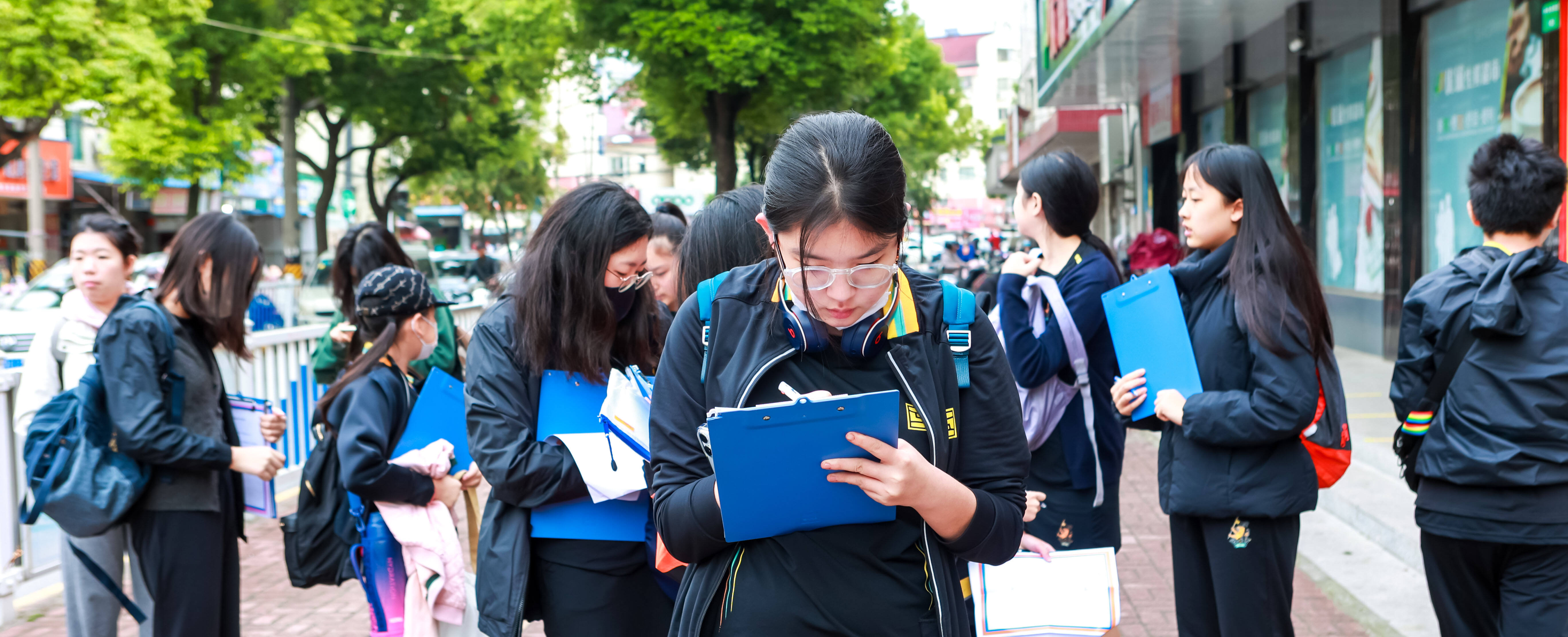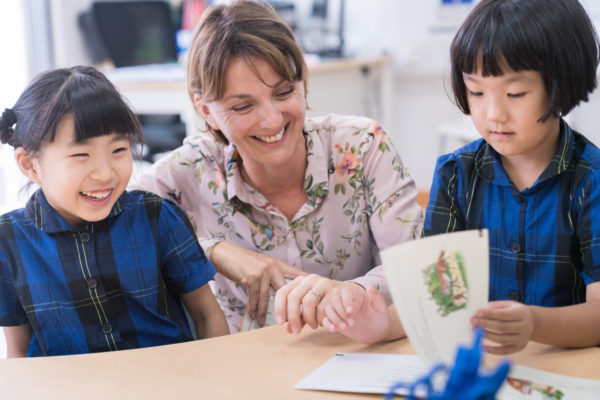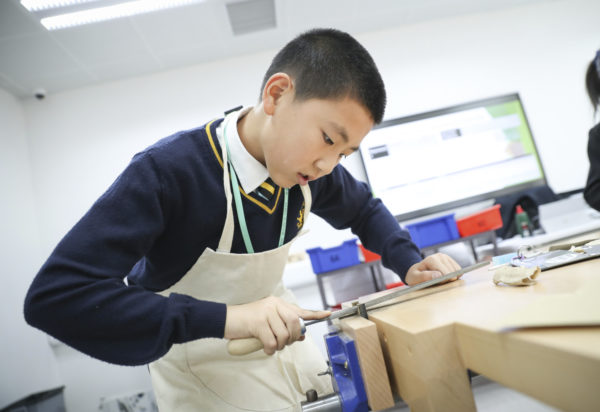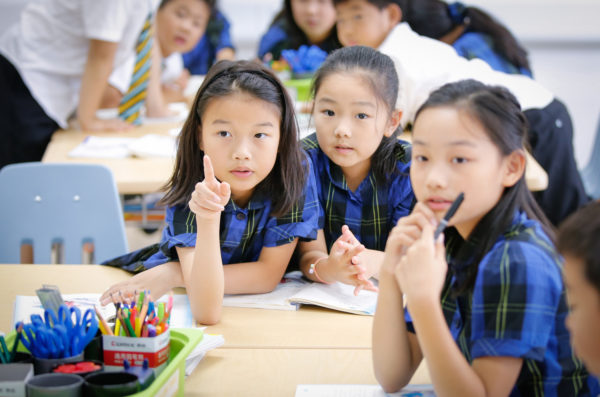
“A sense of inadequacy does not come of itself but from learning and bewilderment from teaching. Knowing this, students and teachers will reflect and strengthen learning and teaching accordingly to achieve excellence in learning and teaching.” —— Study Article of Book of Rites School, as a place to teach and learn, centres on teaching and developing pupils. The Importance of the Pupil:Teacher Relationship in Teaching

Pupils and teachers are the two principal parts of teaching. It is commonly acknowledged that recruiting good teachers is an essential element of any successful school. It is an affirmation of the teachers’ fundamental importance to the task of educating young people. Teaching is a purposeful activity which highlights the process as well as the result. Therefore, lesson planning and delivery are of central importance for any teacher. In pupil-centred teaching practices, pupils are not the passive recipient but a principal part of the equation. When pupils become involved in the teaching process, their interactions with their teachers can provide that all-important spark of inspiration for both sides, keeping them motivated and innovative in their outlook on education. In this sense, pupils are teaching their teachers – it is a two-way exchange of knowledge and progress. Managed effectively, interaction between pupils and teachers can also promote a suitable and healthy kind of pressure for both sides. For the pupils, their teacher's supervision and the moderate pressure from the learning tasks at hand may urge them to rise to the challenge and finish tasks in a timely, efficient manner. As for teachers, their pupils’ constant desire for knowledge and new educational experiences can spur them to continuously improve their teaching and consider new approaches. Thus, a suitably moderate amount of pressure generally aids excellence in teaching and learning, when properly managed. The essence of education does not rely on simply transmitting knowledge. Instead, by utilising knowledge as a carrier, it intends to promote positive interactions between teachers and their pupils, as well as their mutual improvement in personality, emotional wellbeing and character as a result of this virtuous cycle. It embodies the essence of education, which is one individual positively influencing another. Ability Training—Key to Teaching

In both primary and secondary schools, especially in the former, it is not helpful to focus solely on the knowledge that pupils accumulate. There is no noticeable difference in learning Pin Yin (spelling) in early years 4 or grade 1. Although children can use four arithmetic operations in grade 1, it is not necessarily the case that they will surpass the calculation ability of peers when they are in grade 4. What matters most is that pupils have a solid command of learning methods, thinking modes and problem-solving skills used in the process of learning. When pupils are able to use their skills to calculate 3/4 x 12 quickly and correctly, we would first inquire whether or not they understand the equation thoroughly, and then apply the method of multiplying fractions and integers to real-life problems or explore the deeper mathematical meaning behind the methodology. Pupils’ abilities in exploring, problem-solving and innovation need to be constantly trained and encouraged. If we spend most of the classroom time training pupils to memorise various subject-specific principles and facts without the ability to use them flexibly, they will lack the opportunity to explore said principles by themselves. When they grow up, they will likely be hampered by a lack of innovation and decision-making skills. Likewise, if teachers simply impart what is written in the textbooks, their role will be replaced by machines sooner or later. Teachers should take the majority of their lesson preparation time to consider how to motivate pupils’ desire to absorb the course content and subsequently inspire them to proactively explore new knowledge by themselves. In this process of teaching, teachers maintain positive interactions with their pupils, propelling their learning and training their ability to find and solve problems independently. At Huili, we emphasise that teachers in class are not to teach but to facilitate. It is only when pupils are given enough of a chance to explore and think for themselves at school that they can dare to face the unknown challenges of the future and become global problem solvers and creators of a better, fairer and more prosperous future society. Assessment—a Means to Guarantee Effective Teaching

Assessment is everywhere in teaching and learning. The forms of assessment are not confined to teachers’ one-way assessment of their pupils. 1Teachers' Assessment of Pupils This is the most common form of assessment. Teachers will refer to teaching objectives when they assess pupils and adjust their teaching programme accordingly. Sometimes, a teacher’s assessment does not match up with that of the child’s parents because teachers are able to observe the detailed aspects of learning as well as the overall performance of pupils. They can summarise not only summative but also formative assessments. Besides, they will focus on assessing pupils’ knowledge acquisition. More importantly, they can make a general assessment of their learning process and skills overall. For example: parents may simply ask their child to expand their vocabulary when they become aware that the child can correctly write down dictated English words in certain disciplines. However, teachers will evaluate whether they are capable of utilising words flexibly before they extend pupils’ vocabulary learning. 2Pupils' Assessment of their Peers Sometimes teachers allow pupils to assess their peers or themselves, which is an important process of self-reflection. A person can hardly find out his or her own weaknesses and improve them if they cannot assess themselves fairly and accurately. The ability to assess others and oneself needs to be trained. We do not intend to encourage younger pupils to compete with A-Level peers and discover their own shortcomings blindly. Mutual evaluation enables them to find their peers’ defects and assist them to correct or find positive examples to emulate. The process is useful to encourage pupils to help others and openly celebrate their successes. 3Pupils' Assessment of Teachers In a free and equal class environment, pupils are motivated to think critically, raise their doubts and seek the truth. Favourable interactions between pupils and teachers are not one-sided. Teachers can also reflect and improve through pupils’ assessment, which is a manifestation of excellence in teaching and learning. 4Teachers' Assessment of their Colleagues Teachers usually have opportunities to discuss and research with their colleagues. The mutual evaluation designed to perfect their teaching can benefit them without the pressure of being assessed by their superiors. Self-reflection is of great importance for teachers because they may have breakthroughs in teaching during the assessment process. As I often say, teachers must seek a sense of satisfaction from self-reflection like the silkworm breaking from the cocoon and becoming a butterfly. Only by constant effort and self-reflection can teachers expand their educational mindset and advance to a higher level of teaching.